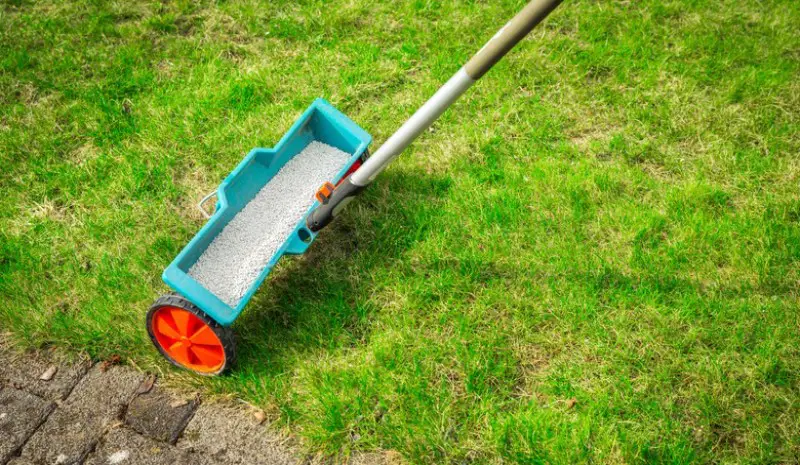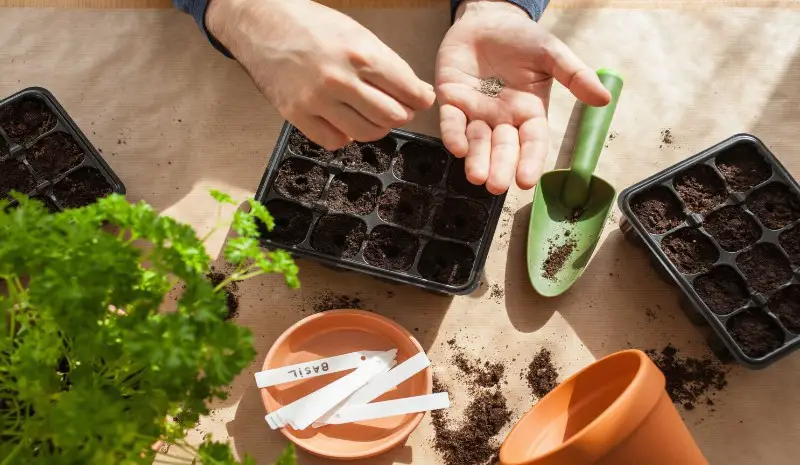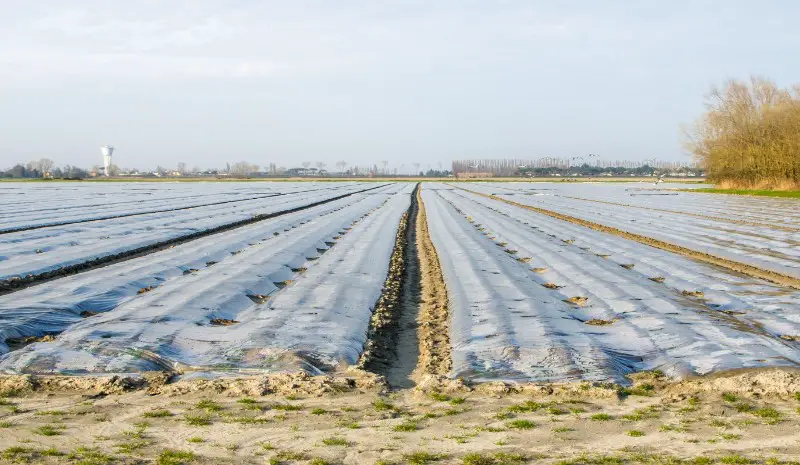Are you a gardener looking to improve the health and growth of your plants? Have you heard of slow-release fertilizer but aren’t quite sure what it is or how it works? Look no further because this complete guide will answer all your questions!
Slow-release fertilizer is a specially formulated fertilizer that releases nutrients to plants slowly over time. In this article, we will explore the definition of slow-release fertilizer, its importance, the types available, how it works, and the benefits it can provide for your plants. We will also cover proper usage techniques and storage tips to help you get the most out of this fantastic gardening tool. So, let’s dive in and learn all about slow-release fertilizer!
Types of Slow-Release Fertilizers
Slow-release fertilizers come in two main types: organic and synthetic. Organic slow-release fertilizers are derived from natural sources such as animal manure, compost, bone meal, and blood meal. These types of fertilizers are typically slow to break down and release nutrients over an extended period, allowing for a gradual supply of nutrients to plants.
They also have the added benefit of improving soil structure and fertility, as they help to increase soil’s water retention and the number of beneficial microorganisms present in the soil. On the other hand, synthetic slow-release fertilizers are engineered to gradually release nutrients through a chemical process.
These fertilizers contain encapsulated nutrients that react with water or soil microorganisms to release the nutrients slowly over a specified period of time. Some of the most common types of synthetic slow-release fertilizers include sulfur-coated urea, polymer-coated urea, and isobutylene diurea. Synthetic fertilizers have the advantage of providing a reliable and precise release of nutrients over a consistent time frame, which can be beneficial in situations where precise fertilizer application is needed.
However, they may not offer the same soil improvement benefits as organic fertilizers. It’s important to note that both organic and synthetic slow-release fertilizers can provide excellent results when used effectively, so choosing the right type for your garden will depend on your specific needs and preferences.
Organic Slow-Release Fertilizer
Organic slow-release fertilizers are derived from natural sources, such as animal and plant byproducts. They release nutrients slowly over time as the organic matter decomposes, providing a steady supply of nutrients to plants.
These types of fertilizers are often more environmentally friendly than synthetic fertilizers, as they do not rely on chemical processes to produce the necessary nutrients. Examples of organic materials used in slow-release fertilizers include bone meal, blood meal, feather meal, and fish emulsion. Organic fertilizers typically release nutrients over a four- to six-month period and are often more expensive than synthetic fertilizers.
However, the benefits of using these types of fertilizers are numerous, including improved soil health, increased water-holding capacity, and reduced risk of nutrient leaching. Gardeners who are looking for an eco-friendly option for fertilizing their plants will find organic slow-release fertilizers to be an excellent choice.
Synthetic Slow-Release Fertilizer

Synthetic slow-release fertilizers are created using inorganic materials and slow-release agents, which enable them to release nutrients over time. These fertilizers are generally made using substances such as sulfur-coated urea, polymer-coated urea, and resin-coated urea, all of which provide a controlled release of nutrients into the soil.
They also often contain other essential plant nutrients, such as phosphorus and potassium, to help support plant growth. Synthetic slow-release fertilizers are often favored for their durability and extended-release capabilities, making them particularly useful for outdoor plants in hot, dry climates where regular watering may not be possible.
However, it’s essential to take care when using synthetic slow-release fertilizers, as over-application can still lead to nutrient imbalances in the soil, which can negatively impact plant growth. It’s also important to choose a fertilizer with the appropriate nutrient balance for the specific plants you’re growing.
Looking for the best liquid lawn fertilizer to achieve that lush, green yard you’ve always dreamed of? We’ve got you covered with our comprehensive guide on the top liquid lawn fertilizers available. To explore the best liquid lawn fertilizers and learn how they can transform your lawn, head over to our blog post titled ‘Best Liquid Lawn Fertilizer‘ Discover the most effective products, their unique features, and expert tips on application.
How Slow Release Fertilizer Works
Slow-release fertilizer works by gradually releasing nutrients into the soil over time. This is achieved through various mechanisms, depending on the type of slow-release fertilizer being used. Organic slow-release fertilizers work by breaking down slowly over time, providing a steady release of nutrients as they decompose.
These types of fertilizers are typically made from natural substances like bone meal, blood meal, and fish meal, and can be mixed into the soil or applied as a top dressing. As the organic matter decomposes, it releases nutrients like nitrogen, phosphorus, and potassium into the soil, which are then taken up by nearby plants.
Synthetic slow-release fertilizers, on the other hand, are made up of pellets or granules coated with a polymer coating that gradually breaks down over time. This coating controls the rate of nutrient release, allowing for a slow and steady supply of nutrients to the soil. These types of fertilizers are often labeled with numbers that indicate the percentage of nitrogen, phosphorus, and potassium they contain.
Compared to traditional fertilizers, which can provide a quick burst of nutrients that can be easily washed away by rain, slow-release fertilizers are designed to provide a long-lasting supply of nutrients that are taken up by plants more efficiently. This makes them an ideal choice for gardeners who want to maintain optimal soil health and plant growth without the risk of over-fertilization or damage to their plants.
Comparison with Traditional Fertilizer
When comparing slow-release fertilizers to traditional fertilizers, the main difference lies in the timing and rate of nutrient release. Traditional fertilizers release nutrients rapidly, which can lead to an overabundance of nutrients in the soil if not applied correctly. This can cause plant stress, leach nutrients away into aquifers or water sources, or cause pollution to the environment.
Slow-release fertilizers, on the other hand, provide a steady and controlled release of nutrients over a longer period of time, ensuring that plants get the nutrients they need without the risk of over-fertilization.
Additionally, traditional fertilizers need to be applied more frequently, usually every few weeks, whereas slow-release fertilizers only need to be applied once or twice during the growing season. Slow-release fertilizers provide more flexibility and convenience and are often a better option for those who have less time to devote to gardening. Slow-release fertilizers are a safer and more efficient way to fertilize plants that provide long-lasting benefits.
The Science Behind Slow Release Fertilizer
The science behind slow-release fertilizer lies in its design. Slow-release fertilizers are made up of nutrient-rich particles that are coated with a material that breaks down slowly in soil moisture. This coating can be made up of natural materials like clay, or synthetic materials like sulfur or resin. As soil moisture is absorbed by the fertilizer, the coating breaks down, releasing small amounts of nutrients into the soil.
These nutrients are then made available to plants slowly over time, providing a consistent supply of nutrients that supports healthy plant growth. The timing and extent of nutrient release depend on a variety of factors, including temperature, moisture, and soil type. Warmer temperatures and excess moisture can increase the rate of nutrient release, while cooler temperatures and dry conditions can slow it down.
Slow-release fertilizers are formulated to provide nutrients to plants over an extended period of time, ranging from several weeks to several months, depending on the specific fertilizer. The science behind slow-release fertilizer provides gardeners with a valuable tool for maintaining healthy soil and plants that do not require frequent reapplication. This helps reduce the risk of over-fertilization and saves gardeners time and resources.
Benefits of Slow-Release Fertilizer

Slow-release fertilizers offer numerous benefits for gardeners looking to improve the health and growth of their plants. One of the most significant benefits is their long-lasting nutrient supply. Slow-release fertilizers are designed to release nutrients over an extended period, providing plants with the nutrients they need to grow and thrive. This means that gardeners won’t have to apply fertilizer as frequently, saving time and money in the long run while still promoting the growth of healthy plants. Another benefit of slow-release fertilizers is their reduced risk of over-fertilization.
Conventional fertilizers can easily cause nutrient buildup in the soil or damage to plant roots if overused, leading to poor plant growth or even plant death. Slow-release fertilizers, however, provide a controlled release of nutrients that reduces these risks and allows for more accurate and safer fertilization. In addition to being effective, slow-release fertilizers are also environmentally friendly. By providing a gradual release of nutrients, they minimize fertilizer runoff, soil leaching, and other negative effects on the environment.
They are also often made using organic materials, reducing the use of harmful chemicals in gardens while still providing the necessary nutrients for healthy plant growth. Slow-release fertilizers are a great option for gardeners looking for a convenient, easy-to-use, and environmentally friendly method of fertilizing their plants while also avoiding the negative effects of over-fertilization.
If you’re passionate about achieving a lush and vibrant lawn, then you won’t want to miss our latest article on the “Best Starter Fertilizer for Overseeding” Whether you’re a seasoned gardener or just getting started, this informative piece is packed with valuable insights and expert recommendations to help you nurture your lawn to perfection.
Long-Lasting Nutrient Supply
One of the primary benefits of using slow-release fertilizer is its long-lasting nutrient supply. As the name implies, slow-release fertilizer provides a steady supply of nutrients to plants over an extended period. This slow and controlled release ensures that plants receive a continuous supply of essential nutrients, such as nitrogen, phosphorus, and potassium, which help promote growth and overall plant health.
With slow-release fertilizer, you don’t have to worry about fertilizing your plants frequently, as the nutrients are released slowly and gradually, providing a steady supply over several weeks or even months. This not only saves time but also ensures that your plants are getting all the nutrients they need to thrive. Plus, slow-release fertilizers tend to be more effective than traditional fertilizers, as they contain a balanced blend of nutrients that are released over time, rather than all at once.
Whether you’re growing herbs, flowers, or vegetables, slow-release fertilizer can help provide your plants with the long-lasting nutrient supply they need to grow strong and healthy. Slow-release fertilizers tend to be more eco-friendly, as they release fewer nutrients into the environment and reduce the risk of leaching, which can cause pollution and damage to local ecosystems.
Reduced Risk of Over-Fertilization
Reduced risk of over-fertilization is one of the primary benefits of using slow-release fertilizer. With traditional fertilizers, it can be easy to over-feed plants, leading to root burn and other problems. When too much fertilizer is applied too quickly, plants can’t absorb the nutrients fast enough, which results in an unnecessary build-up of minerals and salts in the soil. These high levels of nutrients can, in turn, lead to plant damage or even death.
Slow-release fertilizers, on the other hand, are formulated to release nutrients gradually, so there’s a much lower risk of over-fertilization. As nutrients are released more slowly, plants can utilize them more effectively, with significantly less waste. This not only helps prevent damage to plants but also reduces the overall environmental impact of excess fertilizer runoff.
Slow-release fertilizers offer an easy and effective way to avoid the risks associated with over-fertilization while still providing plants with the nutrients they need to thrive.
Environmental Friendliness
Environmental friendliness is a significant benefit of slow-release fertilizers. Unlike traditional fertilizers, which often contain high levels of chemicals that can be harmful to the environment, slow-release fertilizers are designed to be more sustainable and eco-friendly.
Many slow-release fertilizers are made from organic materials, such as compost or animal manure, and do not contain synthetic chemicals or additives. As a result, they are less likely to leach toxic chemicals into the soil and groundwater, which can cause harm to wildlife and negatively impact the environment.
Additionally, slow-release fertilizers require fewer applications than traditional fertilizers, which reduces the amount of waste produced during the growing season. This aspect of their use makes them an environmentally friendly option for gardeners who are looking to reduce their ecological impact.
Another environmental benefit of slow-release fertilizers is that they provide a more balanced and consistent nutrient supply to plants. This means that the plants are less likely to become over-fertilized, which can lead to the leaching of excess nutrients into the soil and water. In turn, this can cause algal blooms and other harmful environmental effects.
The environmental friendliness of slow-release fertilizers makes them a smart choice for gardeners looking to reduce their ecological footprint while still maintaining healthy, vibrant plants.
How to Use Slow-Release Fertilizer
Using slow-release fertilizer is relatively easy, but it is important to follow the product instructions carefully to ensure maximum plant growth and health.
First, determine the amount of fertilizer that will be needed for your specific type of plant. This information can usually be found on the product label or by consulting with a local garden center expert. Once you have this information, it’s important to apply the fertilizer at the right time. In general, slow-release fertilizer should be applied at the beginning of the growing season, just as the plants are beginning to actively grow.
This will ensure that the nutrients are available when the plants need them the most. When applying slow-release fertilizer, it’s recommended to work the granules into the soil to ensure they are effectively dispersed. This can be done by sprinkling the granules onto the soil or, for potted plants, mixing it into the potting soil. It’s important to note that over-application of slow-release fertilizer can lead to plant damage or death, so be sure to follow the instructions carefully.
Finally, remember that slow-release fertilizer should be reapplied periodically throughout the growing season, as the nutrients are slowly used up by the plants. This will help to maintain healthy soil and plants. With proper usage and maintenance, slow-release fertilizer can provide an effective way to keep your garden thriving and healthy.
Application Rate and Timing
When it comes to using slow-release fertilizer, it’s important to apply the proper rate and timing for your specific plants. This will help ensure that your plants receive the correct amount of nutrients they need, without being over or under-fertilized. The application rate will depend on a variety of factors, including the type of fertilizer, the size of the plant, and the growing conditions.
Usually, slow-release fertilizers are applied less frequently than traditional fertilizers since the nutrients are released gradually. As for timing, it’s a good idea to apply slow-release fertilizer at the start of the growing season or just before the onset of the plant’s period of most active growth. This timing will help to give plants the nutrients they need to get off to a good start and support steady growth throughout the season.
However, it’s important to note that the exact timing will vary depending on the specific plant and the growing conditions. Always follow the recommendations on the fertilizer packaging and adjust as needed based on your individual plants’ needs.
Choosing the Right Slow-Release Fertilizer for Your Plants

When choosing a slow-release fertilizer for your plants, it’s crucial to consider the specific needs of your plants and the type of soil you’re working with. Different plants require different levels of nutrients and may require different formulations of slow-release fertilizers to thrive. It’s essential to examine various slow-release fertilizers and nitrates to ensure that you’re selecting the best one for your plants and your soil’s needs.
Synthetic slow-release fertilizers typically provide a more concentrated and readily available source of nutrients, making them ideal for denser, clay-like soils. On the other hand, organic slow-release fertilizers are excellent for sandy and loamy soils, providing a more gradual, natural supply of nutrients.
Additionally, ensure that the slow-release fertilizer you choose contains the necessary nutrients for your plants, including nitrogen, phosphorus, and potassium. When in doubt, consult a gardening expert or do additional research to determine the best slow-release fertilizer for your specific needs.
Are you looking to maximize your garden’s potential during the winter months? We’ve got you covered! Discover the ultimate solution for nourishing your plants and boosting their growth in our latest article on the ‘Best Winter Fertilizer‘ Whether you’re a seasoned gardener or just starting out, this guide will provide you with valuable insights and recommendations to keep your garden thriving even in the cold season. Don’t miss out on this essential resource for winter gardening success!
Proper Storage and Handling
Proper storage and handling of slow-release fertilizer is crucial to ensure that it remains effective and safe for use. These fertilizers are generally safe and easy to handle, but it’s important to follow some basic precautions to avoid any unwanted issues. Firstly, you should store slow-release fertilizer in a cool, dry place that is out of direct sunlight. Exposure to heat, moisture, and sunlight can break down the fertilizer, reducing its effectiveness. It’s also important to keep the fertilizer away from children and pets, as ingestion of the product can be harmful.
When handling slow-release fertilizer, it’s a good idea to wear gloves to avoid skin irritation. You should always wash your hands thoroughly after handling fertilizers. It’s essential to follow the manufacturer’s instructions for application rate and timing, as over-applying the fertilizer can lead to plant damage. Following these simple guidelines can help ensure that your slow-release fertilizer is safe and effective for use, and can help you maintain healthy, vibrant plants all season long.
Conclusion
In conclusion, slow-release fertilizer offers gardeners a number of advantages over traditional fertilizers. The controlled release of nutrients provides a steady supply of nutrition to plants, promoting healthy growth and reducing the risk of over-fertilization. The use of slow-release fertilizer is also more environmentally friendly, as it reduces the amount of fertilizer runoff that can pollute waterways.
Gardeners have a choice of organic or synthetic slow-release fertilizers, giving them flexibility in how they choose to care for their plants. When using slow-release fertilizer, it’s important to follow the application rate and timing guidelines, to ensure that the plants receive the proper amount of nutrients. Storing and handling the fertilizer properly is also key to preserving its effectiveness. Overall, slow-release fertilizer is a great tool for any gardener looking to provide their plants with long-lasting, balanced nutrition.
Frequently Asked Questions
What are the benefits of using slow-release fertilizer over traditional fertilizers?
Slow-release fertilizers provide a slow and steady release of nutrients to plants, which helps prevent over-fertilization. They are also environmentally friendly and long-lasting.
How does slow-release fertilizer work?
Slow-release fertilizers work by gradually releasing nutrients to plants over an extended period of time. This is accomplished through special coatings or formulations that break down slowly when exposed to moisture and other environmental factors.
What are the different types of slow-release fertilizers?
There are two main types of slow-release fertilizer: organic and synthetic. Organic slow-release fertilizers are made from natural sources and typically take longer to break down than synthetic varieties.
Which plants can benefit from slow-release fertilizer?
Slow-release fertilizers can be used for a wide range of plants, including flowering plants, vegetables, and herbs. They are particularly effective for plants that require a steady supply of nutrients over an extended period of time.
How often should I apply slow-release fertilizer?
The frequency of application for slow-release fertilizer depends on the particular product being used and the specific requirements of your plants. Generally, slow-release fertilizers can be applied less frequently than traditional fertilizers, as they release nutrients over a longer period of time.
Is slow-release fertilizer better than traditional fertilizer?
Slow-release fertilizer offers a number of advantages over traditional fertilizers, including reduced risk of over-fertilization and long-lasting nutrient supply. However, the best option for your plants will depend on a variety of factors, including soil type, plant type, and specific nutrient requirements.
Are slow-release fertilizers safe for the environment?
Yes. Slow-release fertilizers are generally considered safer for the environment than traditional fertilizers, as they release nutrients slowly and are less likely to lead to runoff and pollution of local water sources.
Can slow-release fertilizers be used in pots?
Yes. Slow-release fertilizers can be used in pots, but it’s important to select a product that’s formulated for container gardening. Slow-release fertilizers can be particularly effective in pots, as they help prevent nutrient loss that can occur in container gardens.
Are slow-release fertilizers more expensive than traditional fertilizers?
Slow-release fertilizers can be more expensive than traditional fertilizers, but they also provide longer lasting nutrient supply, reduce the need for frequent application, and can lead to healthier plants in the long run.
Can slow-release fertilizers be used in combination with traditional fertilizers?
Yes. Slow-release fertilizers can be used in combination with traditional fertilizers, but it’s important to follow instructions carefully and avoid over-fertilizing your plants. Mixing different types of fertilizers can also lead to nutrient imbalances, so it’s best to consult with a gardening expert before experimenting with combining different products.

